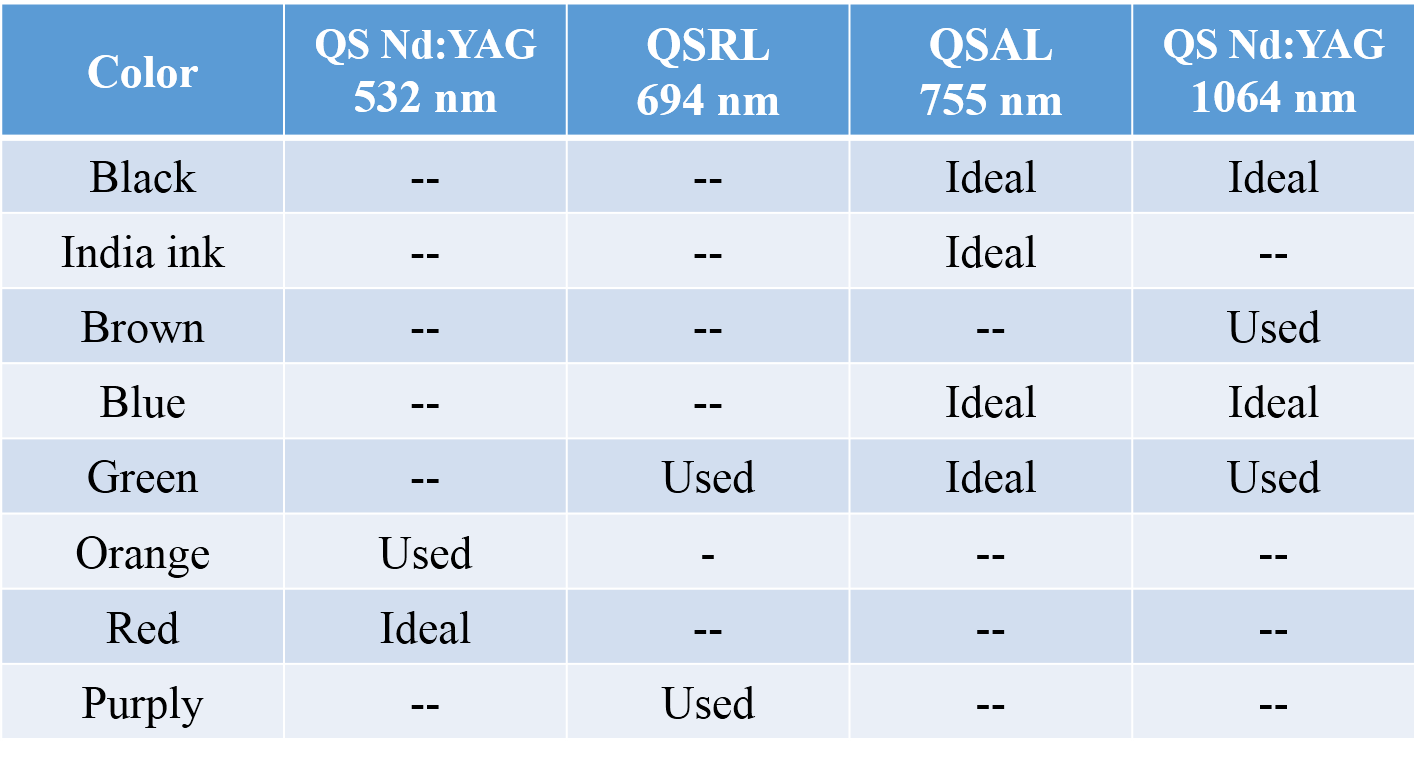Description
Through the years, many methods of tattoo removal, such as dermabrasion, salabrasion, surgical excision, and freeze-burning the tattooed skin with liquid nitrogen have been explored. The advent of lasers brought new options for tattoo removal. The initial argon and CO2 lasers have been replaced by the Q-switched (QS) lasers, which have, in recent years, become the mainstay for tattoo removal due to their ability to efficiently remove tattoo pigments with minimal side effects.
Q-switching, or quality switching, of a laser is a mechanism used to control the light output by concentrating all the energy into intense bursts or series of pulses by modulating the intracavity losses, the so-called Q factor of the laser resonator. The technique is mainly applied for the generation of nanosecond pulses of high energy and peak power with solid-state bulk lasers. Laser devices that incorporate Q-switching are able to achieve selective photothermolysis due to their high energy and short-pulse duration. This can be applied in the setting of removal of the tattoo pigment to arrive at the desired clinical results without much damage to the surrounding tissues, and with relatively faster and uncomplicated healing time.
The three short-pulsed, high-intensity, and pigment-selective QS lasers widely used today for tattoo removal are the following:
-
The Q-switched ruby laser (QSRL) — the QSRL emits light at a wavelength of 694 nm and has a pulse duration of 28-40 ns.
-
The Q-switched alexandrite laser (QSAL) — the QSAL has a near infrared wavelength of 755 nm, pulse duration of 50-100 ns, spot size of 2-4 mm, and a repetition rate up to 10 Hz.
-
The Q-switched neodymium-doped yttrium aluminum garnet (QS Nd:YAG) laser — the QS Nd:YAG laser emits infrared light at 1,064 nm and has a pulse duration of 5-10 ns, spot size of 1.5-8 mm, and a repetition rate up to 10 Hz. The frequency can be doubled and the wavelength can be halved (532 nm) by passing the laser beam through a potassium titanyl phosphate (KTP) crystal.
The broad absorption spectrum of the tattoo pigments suggests that variedly colored tattoos require different QS lasers for their removal. Though QSRL and QSAL have been the earliest lasers used for tattoos, QS Nd:YAG laser (1,064 nm), due to its longer wavelength, higher fluence, and shorter pulse, has emerged as the prototype laser for black and dark blue/black tattoo pigments.
Technical Specifications
QS lasers emit short, high-intensity pulses that cause thermomechanical destruction via photoacoustic waves, leading to the fragmentation of tattoo pigments encased in intracellular lamellated organelles. The subsequent phagocytosis of fragmented ink particles results in gradual fading and clearance of the tattoo pigments.
